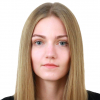Metasurfaces and diffractive structures are widely used in today’s devices, from telescopes and optical computers to neural networks. Unlike other structures, they contain repetitive elements, such as cracks and protrusions in diffractive structures and subwavelength (less than a wavelength) elements – metaatoms – in metastructures.
By changing the position of structures on a device's surfaces, researchers can modify the characteristics of a material or device and produce new optical devices. For that, they need to calculate exactly how light will interact with each element of the structure using matrices, i.e. large numerical tables that can contain millions or even billions of numbers. Matrices need complex calculations of electromagnetic fields, which can only be accomplished with the use of powerful computers.
A team of researchers from ITMO University pioneered the use of Tensor Train for designing periodic optical structures. Created 15 years ago by Russian mathematician Ivan Oseledets, the tool makes it possible to “shrink” matrices and thus reduce the amount of data without losing crucial properties and information.
Tensor Train allows scientists to simplify and perform unprecedented calculations of optical diffraction gratings, metasurfaces for optical computers, photolithographic masks, and other structures. The team utilized the tool to show the technology's capacity using a 1D metasurface with a period of 1,000 wavelengths. Rigorous (precise) solutions for such scales are rarely employed since they are extremely time- and memory-costly for computers. Whereas the new tool managed to run calculations for which conventional methods prove to be too complicated and expensive.

Alexey Shcherbakov. Credit: ITMO NEWS
“The new method brings us closer to developing domestic engineering design systems. It’ll also be useful in designing highly-efficient components for the now-booming optical computing and neural networks. In the future, we want to introduce Tensor Train into computing methods for electrodynamics’ needs. We're now working closely with Russian producers of engineering software and planning to put our findings into practice,” noted Alexey Shcherbakov, PhD in physics and mathematics, the head of the project, and a senior researcher at ITMO’s Faculty of Physics.
The research is supported by the Russian Science Foundation grant No. 22-11-00153.




